Hiyam Chandelier by Cedri/martini
Italian designers Rienzo Cedri and Andrea Martini, the creative minds behind Cedri/martini, produce incredibly fantastic lighting–and by fantastic, I’m referring to the unreal and strange, not to the generally wonderful. Their penchant for the marvelous may stem in part from their unusual design beginnings: Cedri specialized in industrial design “specifically with regard to jewel design” and Martini in “art research, sculpture like creative expression.”
Hiyam Chandelier. Designed by Cedri/martini.
Many of their lighting fixtures seem transported from the age of tomorrow, taken from the set of destiny’s next Stanley Kubrick, and yet they retain something of an enlightenment-era vibe with their subtle allusions to science: “Passion for experimentation, taste for organic forms and the complicated geometries of nature took to the creation of futuristic objects which remind ydrodynamic forms of marine animals or polished insect exoskeletons.”
Recently, as part of Milan Design Week 2010, Cedri/martini exhibited Hiyam at the Anfiteatro Arte Gallery. This large chandelier is “a tribute to the Orient.” In the great tradition of Scheherazade’s exotic tales, Hiyam recalls the hanging lamps of eastern temples, as well as the spires, ornamentation, and arches of the sacred buildings. But, in typical Cedri/martini playfulness, the shape of Hiyam also recalls a children’s top, a satellite station, Seattle’s space needle, and (for me, at least) a 1950s Christmas tree bubble light. The designers call their suspension light “a geometric sequence that radiates into space spreading light and energy.” In non-metaphorical terms, this means Hiyam is 110 cm in length with a 100 cm diameter. A floor lamp is also available, which measures 210 cm in height with a 60 cm diameter. Hiyam takes halogen bulbs and the lamp comes in metal foil in gold-copper and silver, as well as any other color you can find in the Cedri/martini catalogue.
via Contemporist
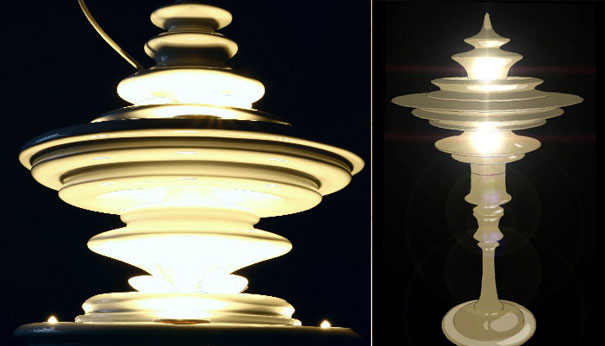
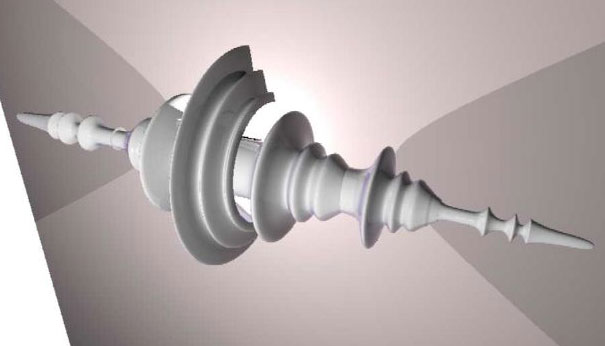
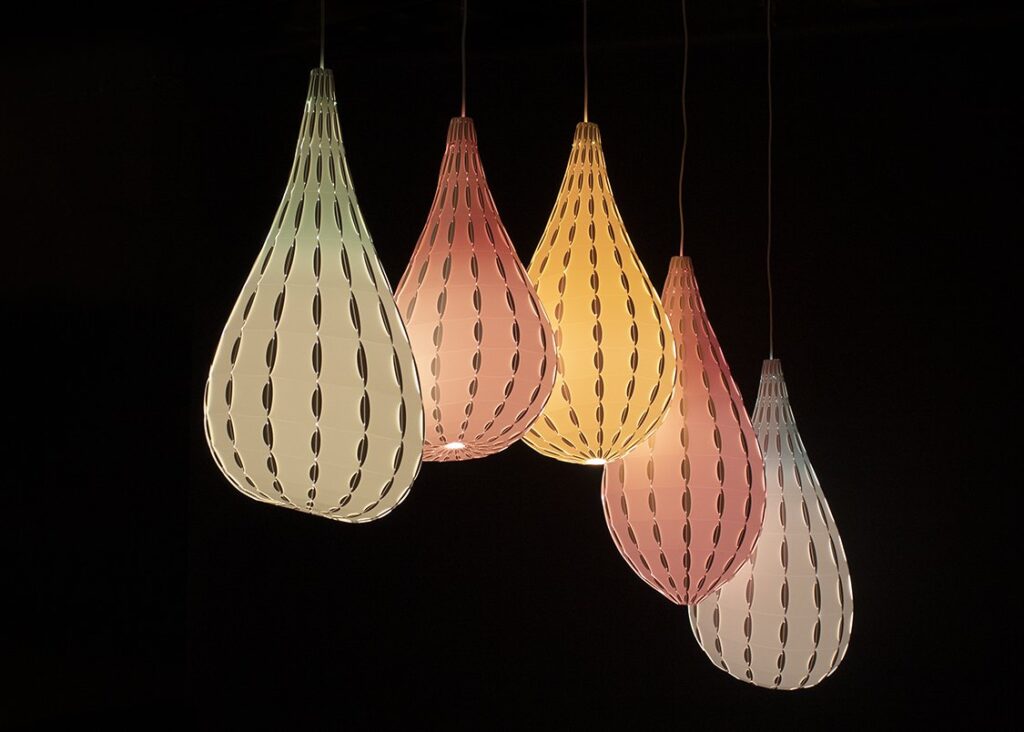
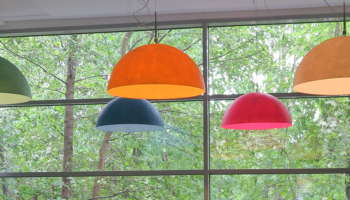
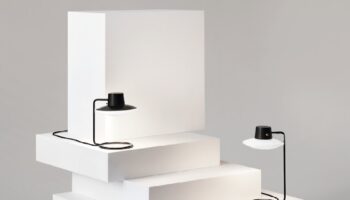

Leave a Reply